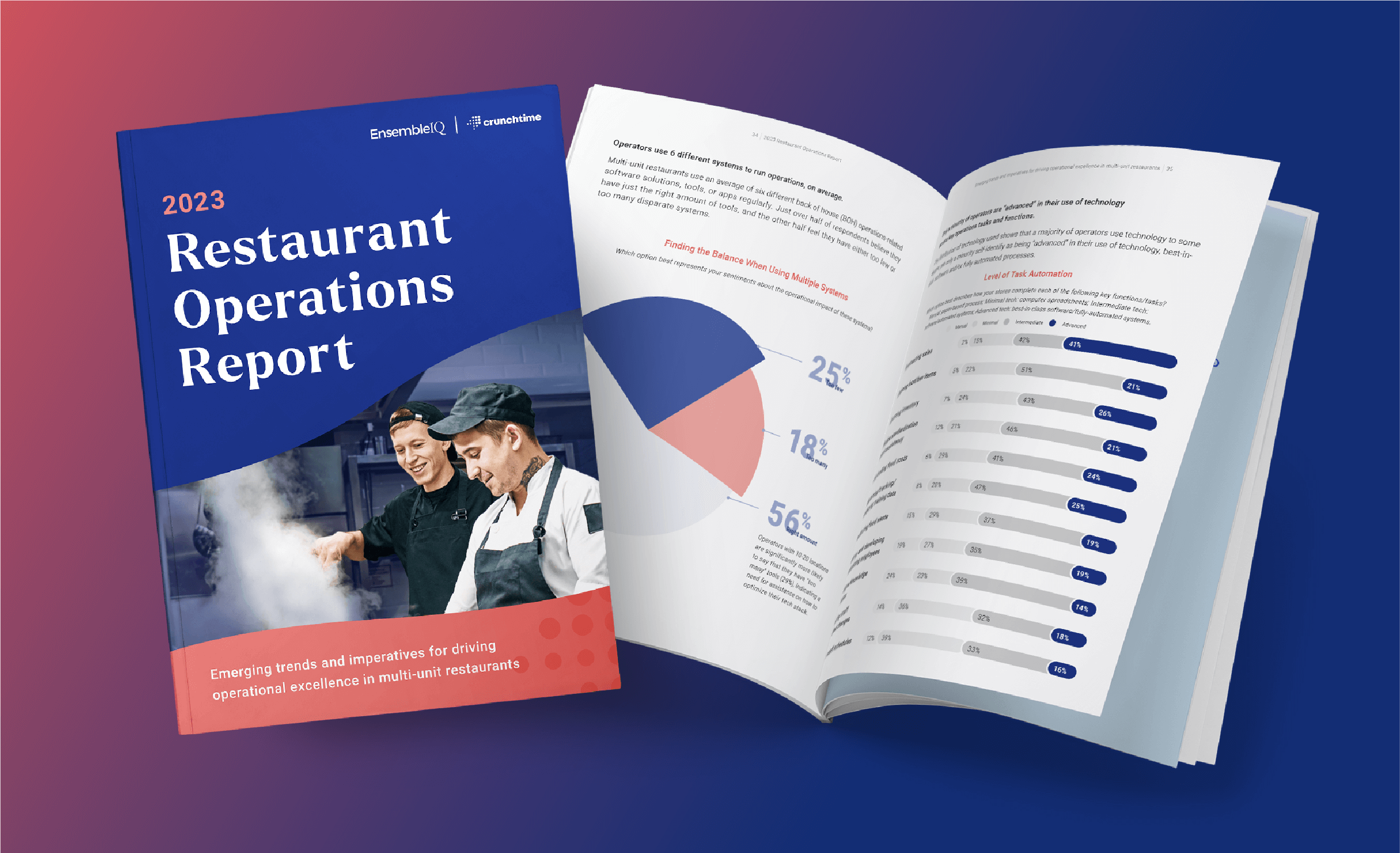
- Home
- Press Releases
- 96% of Multi-unit Restaurants are Planning Expansion Despite Operational Challenges

96% of Multi-unit Restaurants are Planning Expansion Despite Operational Challenges
New research reveals market optimism but recognizes cost management, task completion, and employee training as imperatives to unit growth and operational excellence
BOSTON, September 19, 2023–Crunchtime, the leading provider of operations management solutions for the restaurant industry, today shared the results of a quantitative research study that revealed that operators have their sights set on growth, with 96% of respondents planning unit expansion over the next 12-18 months.
However, operators see big opportunities for improvement, centered around core areas that drive operational excellence, including:
- Reducing food costs — 74% of operators say they’re aiming to reduce food costs in the next 12-18 months, and shared that food costs are 35% on average—providing a clear benchmark.
- Improving employee scheduling — Nearly 40% of shifts are insufficiently staffed, underscoring the growing complexity of labor scheduling. Four out of ten respondents are looking to improve sales forecast data to optimize staff scheduling.
- Executing tasks and procedures in stores — Operators estimate that improving operations execution could increase sales by an average of 22%.
- Accelerating employee proficiency — Operators want employees trained one week faster. It currently takes new employees an average of 19 days to become shift-ready, and operators want this reduced to 12 days.
The research study, conducted by EnsembleIQ from May to July of 2023, was based on an anonymous survey of restaurant industry professionals operating a minimum of 10 locations. The pool of 202 respondents included owners, c-suite executives, senior managers, and directors with decision-making authority or influence across full-service, fast casual, and quick-service restaurants.
“To be positioned for future growth, restaurant brands need to focus on two key operational levers–getting a tight handle on profitability and creating a great guest experience–across every location,” said John Raguin, Chief Executive Officer of Crunchtime. “The research findings show there are still tremendous opportunities to improve operations in terms of food cost, staffing, task execution, and training.”
Operators are aiming to rein in food and labor costs
74% of operators indicated that reducing food costs is a strategic priority in the near term, and shared that food costs are 35% on average—providing a clear benchmark. Strategies for reducing food costs center around inventory-related processes, including but not limited to, recipe management, vendor relationships, and menu optimization.
Operators shared that stores are insufficiently staffed–both understaffed and overstaffed–for 38% of any given week. This signifies that staffing challenges are broader than just finding labor, even with consistently high turnover throughout the industry. Operators report that employees and their managers spend nearly eight hours each week per location creating and managing schedules which creates a drag on productivity.
Operators place strategic value on consistent task completion and developing employees
Operators estimate that improving the completion of daily operational tasks could increase sales by 22% on average in each store. 53% of operators plan to add or upgrade food safety and operations execution technology as a priority for improvement in this area.
It takes new employees an average of 19 days to become shift-ready, and operators want this reduced to 12 days. Less than half of operators strongly agreed that they have a good handle on training and development currently, and 53% plan to invest in training programs or technology in the next 12-18 months.
Fewer than 1/4 of operators self-identify as “advanced” in their use of tech across key tasks/functions
On average, respondents use an average of six different back-of-house operations-related software solutions/tools/apps regularly. Half or more plan to add or upgrade back-of-house restaurant technologies, including business intelligence (63%), inventory management (60%), and labor scheduling (56%).
“It's clear that multi-unit restaurants are poised for growth, but they are still juggling a variety of challenges that need to be addressed," said Beth Brickel, Vice President of Research, EnsembleIQ. "Leveraging technology continues to be a key strategy for overcoming obstacles to growth.”
For greater detail and insight into this research, download the full report. A deeper dive into the findings will also be shared in a live webinar with EnsembleIQ on Wednesday, October 25th—click here for more information and to register for free.
About Crunchtime:
Crunchtime is how the world’s top restaurant brands achieve ops excellence in every location. Our software is used in over 125,000 locations in 100+ countries to manage inventory, staff scheduling, learning and development, food safety, operational tasks, and audits. Crunchtime enables customers including Chipotle, Domino’s, Dunkin’, Five Guys, Jersey Mike's, and P.F. Chang's to control food and labor costs, and deliver great experiences. For more information, visit crunchtime.com.
Media Contact:
Cindy Poulos
Vice President of Marketing Communications
cindypoulos@crunchtime.com
Share this post
Related


Crunchtime’s Ops Summit Set to Be Biggest Customer Event in its History

